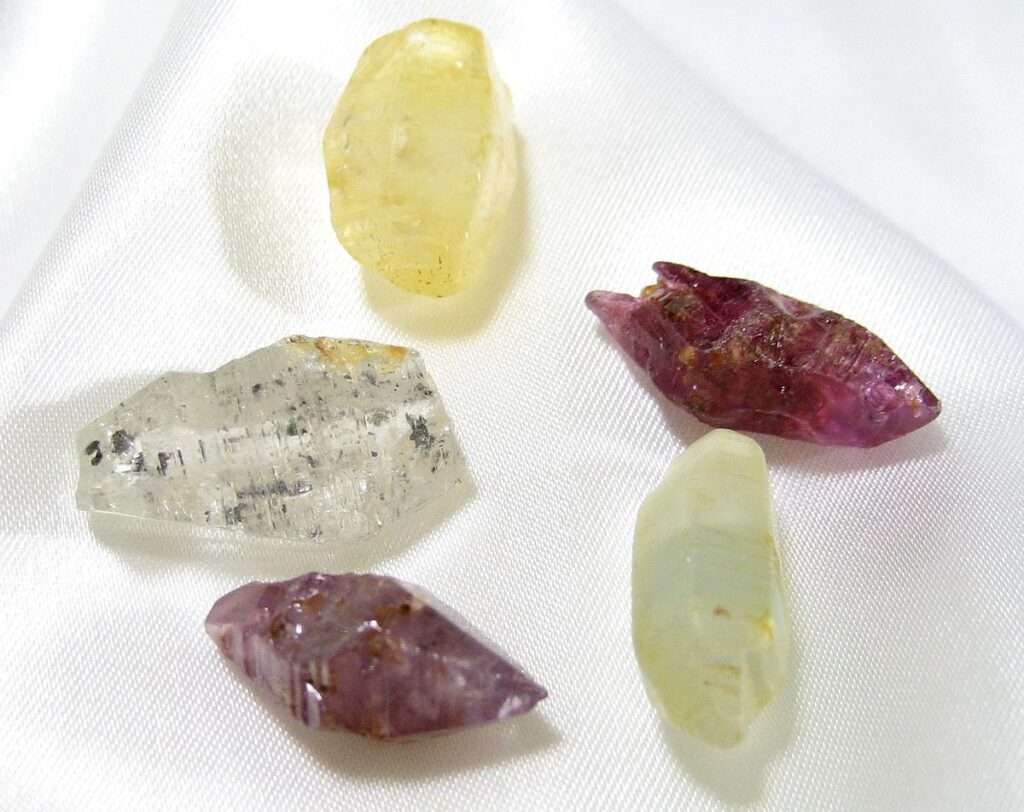
Appearance
The mineral corundum is made up of aluminum oxide (Al2O3). With a Mohs hardness of nine, this mineral is extremely durable and frequently used as an abrasive. The two most well-known corundum hues are sapphire (blue) and ruby (red). Corundum, however, can also be found in different hues, including purple, pink, green, and yellow.
Geographical Distribution
Around the world, corundum can be found in numerous locations, including Thailand, Tanzania, Madagascar, India, Australia, Myanmar, and Sri Lanka.
History
Since ancient times, corundum has been used as a gemstone in jewelry. Throughout history, monarchs and the wealthy have placed a great value on rubies and sapphires. The beauty and protective properties of corundum were highly regarded by the ancient Greeks and Romans. Ruby and sapphire were popular among the nobles throughout the Renaissance and were utilized in ecclesiastical jewelry during the Middle Ages.
Metaphysical Properties
It is believed that corundum fosters wisdom and well-informed decision-making by encouraging insight into the unknown. It is also claimed to calm turbulent emotions by releasing tension, channeling anger into constructive release, and lessening the prevalence of negative ideas. It’s also said to improve intuition.

Chemical Composition
Al2O3, or aluminum oxide, makes up the majority of corundum’s chemical composition (more than 95% of it). Corundum can have trace levels of impurities in addition to oxygen and aluminum, which can change the material’s color and other characteristics. Iron, chromium, titanium, and vanadium are a few frequent impurities found in corundum. These impurities can result in the formation of colored corundum variations, such as sapphire (blue) and ruby (red).
Types
Among the most well-known varieties of corundum are:
Ruby:
The reddish-brown form of corundum known as ruby is caused by chromium impurities. Because of its rich color and durability, ruby is one of the most costly and sought-after gemstones in the world.
Sapphire:
Similar to ruby, sapphire is a blue form of corundum that has impurities that give it color. The most well-known and well-liked type of sapphire is blue, although it may also be found in pink, yellow, green, and purple hues.
Padparadscha:
The pink-orange padparadscha corundum variant is extremely valuable and uncommon. The Sanskrit term for “lotus flower” is the source of the name “padparadscha,” and the gemstone is prized for its distinctive and beautiful color.
White Corundum:
One variety of corundum that has a colorless or white look is called white corundum. Because of its hardness and durability, it is usually employed as an abrasive.
Black Corundum:
One variety of corundum that has a dark gray or black look is called black corundum. Because of its strong chemical resistance and high thermal conductivity, it is commonly employed as an abrasive and in refractory applications.
Uses
- Corundum has application in numerous industrial and commercial processes, including as abrasive manufacturing, refractory material production, LED light manufacturing, and jewelry gemstone manufacturing.
- Gemstone value: Precious gemstones used in jewelry and other decorative applications are high-quality corundum crystals, like ruby and sapphire. These gemstones are extremely precious and sought-after due to their rarity and beauty; carat values can easily reach tens or even hundreds of thousands of dollars.
Table





